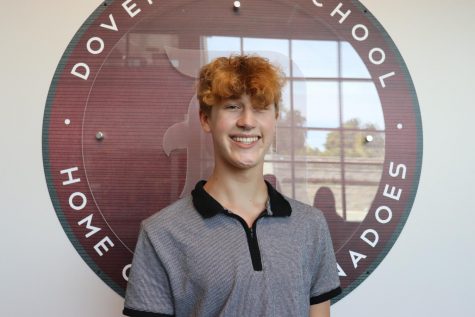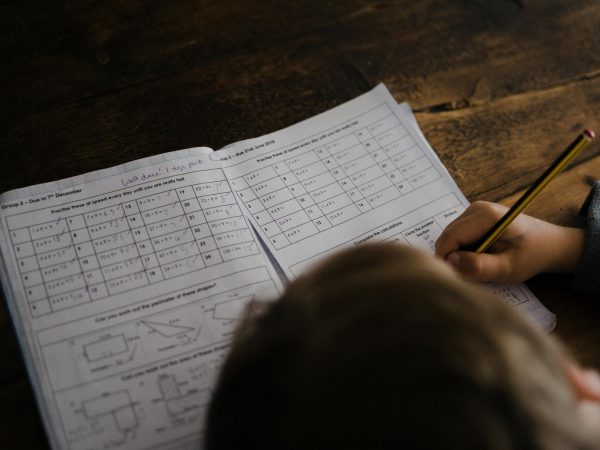Mock Trial
Objection your honor; hear-say has been displayed by the opposing counsel. Their client has received their information and came to their conclusion based on what their partner has told them. Objection sustained. This transaction between a judge and attorney may sound confusing, but for active members in Dover’s Mock Trial Team it is all too familiar. Many are unaware of Mock Trial, the simulation of a courtroom put on by highschoolers and even college students, but it is one of the most participated in extracurricular activities. Mock Trial was founded in 1985 by Dean Richard Calkins of Drake Law School and had few participants. Now approximately 700 teams from 400 different universities as well as 7,300 high schools participate annually.
Every year a new case is presented to Mock Trial teams across the nation. This year’s case was based around Tinker v. Des Moines, the cornerstone trial in determining student’s First Amendment rights within school, because it was its 50 year anniversary. The case revolved around Rory Maldonado, a Trillium High School student, and his suspension declared by Principal Varga. As the story goes, Rory was having a discussion about gun rights in Miss Charkov’s class when he exclaimed the intentions to hold a pro-gun rally. That night he tweeted to see if anyone else would go along with planning his rally. In his tweet Rory tagged Mrs.Charkov, THS students, and the NGOA. The responses to the post varied\; while there were many negative responses, some people agreed with Rory and decided to meet up with him to plan the rally. These agreeing tweeters included Harper Chen, a Trillium High student, Emma Peccane, a college student, and Todd Birch, another college student. With the active members present, the real birth of the rally all began.
At their meeting they decided on what they were going to say and do at the rally. Their plan was to have the rally start at the school and proceed to Paw Paw Park where they would recite cases and quotes from famous pro-gun activists. This structure of this rally was very similar to last year’s rally that supported the opposing view on guns. Last year’s rally was supported highly by the school and Rory thought the same attitude would be displayed for his rally. However, this was not the case. Students were not happy with Rory’s view and ultimately did not want him to put on a rally. With mass upset, Principal Varga urged his students to avoid the rally. Matters only went downhill from here.
A food fight broke out causing two students to be injured and a gigantic mess in the cafeteria. The cause of the food fight was uncertain with Harper Chen saying she heard students rejoice “meat equals murder” while throwing food in response to the school’s choice to get rid of the vegitatian option. However, Reese Dimattia finds Harper Chen, an active member in the planning of Rory’s rally, to be the cause of the food fight for she was found in the middle of the food hurricane. Without truly knowing the cause of the food fight, Principal Varga mandated that anyone who went to or participated in the rally would be punished. This did not stop Rory. He decided to move his rally completely off campus, cutting the school completely out of the rally. Rory went along with his new plan and held his rally. The rally was carried out in a peaceful, respectful manner, but it did have counter protestors along the perimeter of the park, blowing air horns in an attempt to disrupt the rally. Principal Varga went to the rally to see who disobeyed his orders. The next day Principal Varga called down Harper and Rory. He then punished them and only them.
Now, with the whole story displayed, teams begin reading case law. These are trials that have made it to the Supreme Court and ultimately set up tests and procedures for other courts to follow. For example, Tinker v. Des Moines established that “students do not shed their rights at the school door,” but schools can censor speech when it “causes substantial or material disruption.” Courts across the U.S. now use that trial to determine if a school or student’s action is legal. As helpful as case law is, it is equally as challenging to decipher. The vocabulary used within it is extremely advanced and new to the average person, so it makes it difficult for students to understand the law.
From this case law students start to build a case for the defense and plaintiff because each team must perform both sides of the case. This is when teams begin to write their directs. Direct examination is when a witness testifies with the help of their attorney questioning them. These are completely rehearsed and typically memorized. In the direct, an attorney is trying to get their witness to explain the events involving the incident at hand. Attorneys do this by asking specific questions that allow the witness to say their side of the story. The challenge with direct is the rule that the questions the attorney asks cannot be leading, meaning they can not imply an answer. For example an attorney would ask Harper, “Where were you May 6th?,” but they could not ask, “Harper, you were in the cafeteria on May 6th, correct?” After the direct is finished the opposing counsel has the opportunity to cross examine the witness.
This brings the team to the next step, cross examination. The point of cross examination is to disprove the ideas presented by the opposing counsel’s witness. One does this by bringing up facts written in the witness’s testimony that their attorney tried to hide, proving that they are biased, or getting them to admit to doing something illegal. In this stage, attorneys can ask any type of question, including leading questions. The witness that is getting crossed has a very important job, getting their side of the story out while still abiding to their testimony. Witnesses should avoid agreeing to statements that may not be factual. This will only give a bad light to the judges for they only know the case as much as the witnesses tell them.
The final step for preparation is to write the opening and closing statements. Though it seems easy, they are often the hardest part of the trial, especially the closing. The open is the first time the judges hear about the case and the stances taken. In the opening an attorney explains the action that has taken place, if it is legal or not based on case law, and their position. They end with a promise or feeling of assurance that leaves a good impression of the judges. The closing is very similar. It reinstates the points your witnesses have made, justifies/disproves actions with case law, and concludes with a catchy line. However, the closing has one additional element: explaining the points they scored through their cross examination. If they made the opposing counsel’s witness agree with an immoral, illegal, or unjust action, an attorney will include it in their closing statement to further justify themselves.
With Dover’s Mock Trial team, led by Mr. Bartholomew and local prosecuting attorney Amanda Miller, having prepared and practiced all these points, they walked into the New Phila Courthouse, ready to perform in front of a group of judges. The two teams, Crimson and Gray, had trials in the morning and afternoon, each doing very well. Cameron Spraggins and Eddie Baustista-Garcia received an outstanding attorney award along with Alex Byers, Grace Williams, and Calli Symons who received an outstanding witness award. Though neither of the teams made it to regionals, the time and commitment put in by both teams is impressive all in of itself.
If you want to give Mock Trial a try, do not be shy. The high school now offers a Mock Trial class for students desiring the courtroom experience. This class provides extra time for Mock Trial participants to rehearse their lines and lock down their directs, crosses, openings, and closing statements. The team is always looking for new, bright people, so go sign up for the class and be prepared to wear the shoes of a real attorney.

Nevin is a senior and returning member of the Crimsonian staff. After taking a gap year, Nevin has come back as Co-Editor-In-Chief. He participates in...






